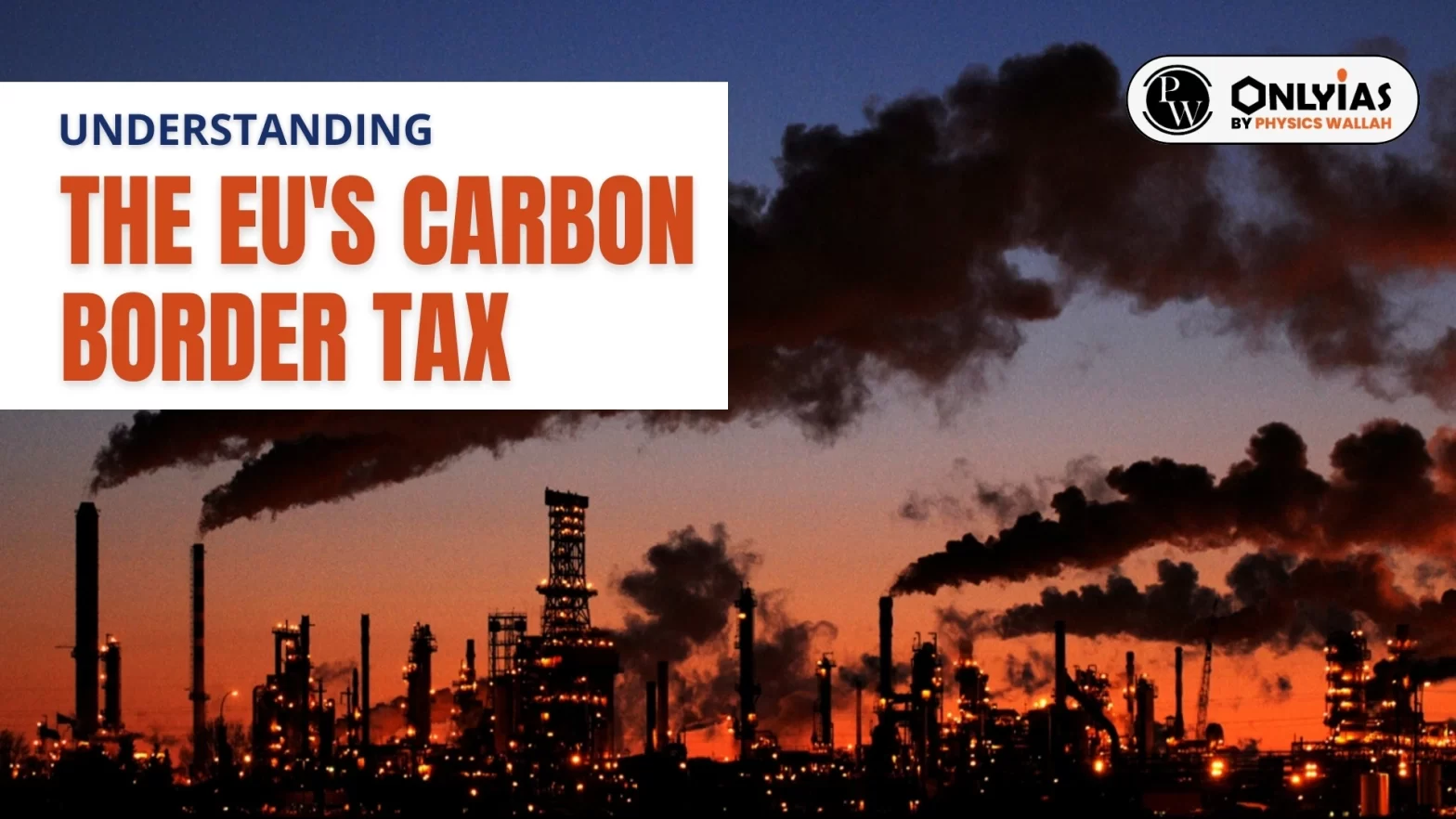Context: This editorial is based on the news “Understanding the EU’s carbon border tax” which was published in the Hindu. This article is expressing the challenges and options available to India with reference to the European Union’s (EU) Carbon Border Adjustment Mechanism (CBAM) tax, starting January 1, 2026.
About the EU’s Carbon Border Tax or CBAM
- A part of the EU’s “Fit for 55 in 2030 package”: To achieve the target of a 55% reduction in greenhouse gas (GHG) emissions by 2030, compared to 1990 levels, under the European Green Deal, Carbon Border Tax or CBAM would play a significant role.
- Two-Phase Implementation: Transitional Phase: EU’s Carbon Border Tax intends to tax carbon-intensive products coming into the EU from 2026 and is divided into two phases, with the first phase (transitional phase) kicking in from October 1, 2023.
- Definitive Phase: From January 1, 2026, the CBAM will enter the definitive phase wherein, upon declaration of the emissions embedded in imports,
- Seeking: The importers will be required to surrender annually the corresponding number of CBAM certificates.
- Applicability: It will be applied to the actual declared carbon content embedded in the goods imported to the EU.
Objectives of the Carbon Border Adjustment Mechanism (CBAM)
- To counter the challenge of Products Substitution: There is a threat to EU products being replaced by carbon-intensive imports from other countries such as India or China and this higher standard of environmental compliance will reduce their competitiveness.
- To work on the line of EU’s Emission Trading System (ETS): The EU’s Carbon Border Tax is intended to work like the EU-ETS, which sets a cap on the amount of GHG emissions permitted.
- EU-ETS, a Way to prevent Carbon Leakage: The EU-ETS, companies covered by the scheme have to ‘buy’ allowances corresponding to their GHG emissions and financial incentives are provided to them to cut emissions. But energy-intensive industries receive free allowances to ensure their competitiveness.
- A way to prevent carbon leakage: Here, the carbon-intensive production by EU-based producers could move to non-EU countries with lax environmental regulations. The CBAM has been pitched to replace this allocation of EU-ETS allowances.
Must Read: UN Climate Summit 2023 or COP28: Outcomes, Agreements and Challenges
Impact of EU’s Carbon Border Tax on India
- Adverse Impact: India is among the top 8 countries that will be adversely affected by the CBAM. It is estimated that a few of its core sectors such as steel will be greatly affected by the CBAM.
- Challenge of Protection: For industries from the potential negative impacts of CBAM.
- Limited Time Availability: To formulate and implement effective carbon taxation measures.
- Failed to take cognisance of the other factors: The EU’s failure to consider factors like cheap labor and other modes of production.
- The U.K.’s own Carbon Border Tax by 2027: This is expected to cause a significant upheaval for India’s exports in the forthcoming years.
About Carbon Credit Trading System (CCTS)
- India’s Initiative: India’s own carbon trading mechanism.
- Introduced in: In December 2022, India amended the Energy Conservation Act, 2001, to introduce the Carbon Credit Trading System (CCTS).
- Objective: To combat climate change by incentivising actions for emission reductions leading to increased investments in clean energy by the private sector.
- India is still working on the specifics to operationalise the Carbon Credit Trading System, including carbon valuation.
- Basis of Environmentally Proactive Actions: In India, the obligatory Carbon Credit Trading System model is also coupled with the voluntary market-based mechanism called the Green Credit Programme Rules.
- The Green Credit Programme Rules were notified by the Ministry of Environment in 2023, with an aim to encourage more environmentally proactive actions going beyond the carbon reduction mandate.
Must Read: Green Credit Program (GCP): What Is It? And Its Significance
The Path Ahead
- Challenge the practice as being violative of the common but differentiated responsibilities principle agreed upon under the Paris Agreement.
- India has already challenged the EU’s Carbon Border Tax before the World Trade Organization under the special and differential treatment provisions.
- The EU could collect the tax and return the funds to such countries to invest in their green technologies.
- India needs to formulate its own carbon taxation measures that align with the principles of the Paris Agreement while simultaneously safeguarding its industries’ interests. However, given the limited time available, it is imperative for India to act swiftly in this regard.
![]() 10 Jan 2024
10 Jan 2024

